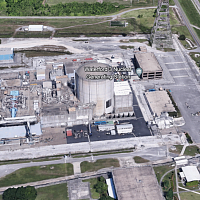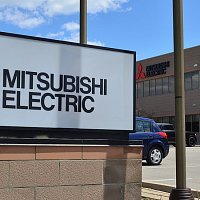
EXPERT OPINION: Experience from the Field
Expert Opinion by Chris Kenney
President
Clover Oil and Chemical Company LLC
This article will focus on the history and current supply situation for mineral oil-based transformer insulating fluids in the North American market. The article is based on the 40 years of author's experience working in the specialty base oil business, most of which has been spent working in the power industry with various specialty-based refiners, selling and marketing transformer oils to the OEMs and the utility industry, as well as building out national distribution supply chains to service the now robust field-fill market.
The supply chain for conventional naphthenic crude based insulation oils has changed greatly over those 40 years. The biggest change has not come so much in the specifications and chemical makeup of the insulating fluid, but rather in the refining companies that manufacture and sell the finished products. Until the early 1990s, the so-called major oil companies, dominated the supply and distribution of naphthenic base transformer oils.
Naphthenics were the selected base oil because they exhibited the characteristics needed under the operating conditions experienced in large power transformers. Naphthenic crudes were wax free, had naturally occurring low pour points, lower aniline points, signifying good solvency properties, and were the preferred base oil to use. In the early days of base oil refining, paraffin-based oils were considered inferior to naphthenic base oils simply because they lacked these characteristics.
Refining technology has changed greatly in how paraffin-based oils are refined to meet the demand for more precise technical requirements. These technical requirements for paraffin-based oils have been driven by the more stringent properties necessary to meet new generation motor oil specifications.
In the early 1990s, the dominant naphthenic refiners who supplied the market were Exxon, Shell Oil and Sun Oil. All three had specialty naphthenic refineries as part of their large refining complex.
Until the early 1990s, the so-called major oil companies dominated the supply and distribution of naphthenic base transformer oils. Then, almost overnight, things began to change.
The brand names of Univolt, Diala and Suntrans were the accepted brand names used across the entire industry spectrum. Then, almost overnight, things began to change. There were growing fears among the major naphthenic-based oil refiners that naphthenic select crudes, vital to making naphthenic base oils, were beginning to play out. The domestic supply of low aniline naphthenic crudes was becoming scarcer and more expensive.
In the early 1990s, world’s leading manufacturers of naphthenic base oils started closing their naphthenic refineries, while at the same time a number of small regional naphthenic refiners started upgrading their production.
A major portion of the finished naphthenic base oil production went to process oils where aniline point was critical. Sun Oil, a worldwide leader in the manufacture and distribution of naphthenic base oils announced the closure of its Marcus Hook naphthenic refinery in 1991. Exxon and Shell soon followed in announcing their intentions to exit the naphthenic base oil market. It just so happened a small naphthenic refinery in Vicksburg, MS, by the name of Ergon, in anticipation of this phenomena, had just finished expanding their new plant from 3,000 to 6,000 barrels a day.
Another small regional Louisiana refiner, Calumet, had also just finished a brand new plant in Princeton, LA. Another small regional refiner, Cross Oil, has just finished upgrading their hydrotreating capabilities and entered the transformer oil market in 1992. Finally, a California naphthenic base oil refinery, San Joaquin, upgraded their naphthenic production in the late 1990s to manufacture severely hydro-treated naphthenic base stocks.
The upgrading of these smaller plants was not driven so much by the anticipation of larger competing refiners exiting the naphthenic business as it was by the 1984 OSHA requirements to clean up these base stocks for Polycyclic Aromatic Content.
It had been proven earlier the high PHA content in a base oil could cause cancer through various forms of occupational hazards either by direct or indirect exposure. If not for these providential plant upgrades by the smaller regional naphthenic refiners, there would have been a real supply chain interruption in supplying naphthenic base mineral oils to the power and utility users in the North American market.
Looking back over the recent past, we can see where power transformer OEMs and especially larger utilities would be well served to be proactive in staying current with the newest technology of mineral oil transformer fluids currently being offered to the market. In the early 2000s, Petro-Canada iso paraffin transformer oil was introduced to the American utility industry*.
The reception of the product, except for a few large utilities was lukewarm, since there was a sense that the current situation was adequate, where the saying, “If it isn’t broken, then why fix it” applied.
Without the providential plant upgrades by the smaller regional naphthenic refiners, there would have been a real supply chain interruption in supplying naphthenic base mineral oils to the power and utility users in the North American market.
Technical interest in looking at a different base stock other than naphthenic was small. The same possible crude oil production constraints exist today for two prominent regional naphthenic base oil/transformer oil refiners. Naphthenic sweet crudes necessary to distill and hydrotreat conventional naphthenic base oil products are still more difficult to obtain on a ratable basis than conventional crude oils to make commodity distilled products. Plus, these light sweet crudes are more expensive than other benchmark crudes. The current premium for Louisiana light sweet (LLS) crude as reported by various public sources averages about $2.00 to $3.00 a barrel over WTI. Base oil production constitutes only 1% of all refining capacity. The manufacture of these transformer mineral oil based products is surely a specialty business.

Currently, there are quite a few major oil companies that are attempting to market an iso paraffin – a highly refined transformer oil – to the power and utility industry. These products offer an excellent alternative to conventional naphthenic base oils, but in North America, they have received little attention.
Currently, there are quite a few major oil companies that are attempting to market an iso paraffin – a highly refined base oil/transformer oil to the power and utility industry. One large global refiner is offering a transformer oil refined by their gas to liquids technology (GTL). These products offer an excellent alternative to conventional naphthenic base oils. This refiner has made some significant inroads into the European transformer oil market urged on by large utilities specifying this product when filling their transformers. The science on these products is well established. They provide up to twice the oxidation stability, they have excellent low gassing tendencies, less aromatics, lower viscosities at 0°C and better overall thermal properties. In North America these products have received little attention.
Should the utility industry and power industry join forces to jointly develop strategies to broaden their approval lists to include the iso paraffin products? While the delta between the costs of the naphthenic oil as compared to the iso paraffin may be large, it is still a benefit worth considering given the experience in Europe. The viscosity grade necessary to make transformer oils is not expansive beyond the transformer oil application.
Although there is no crisis of supply for conventional naphthenic base oil transformer oils, we could see a pinch in supply due to some of the factors mentioned above. Change is always around the corner, most times when we least expect it. We believe that it is time for the utility industry and large power transformer producers to take a serious look at the iso paraffin products to lengthen their supply chain, lower long term costs and avoid supply interruption in the future.
We believe that it is time for the utility industry and large power transformer producers to take a serious look at the iso paraffin products to lengthen their supply chain, lower long term costs and avoid supply interruption in the future.
*Editor’s Note: The Author, Chris Kenny, was personally involved in the introduction of Petro-Canada iso paraffin transformer oil to the North American market














